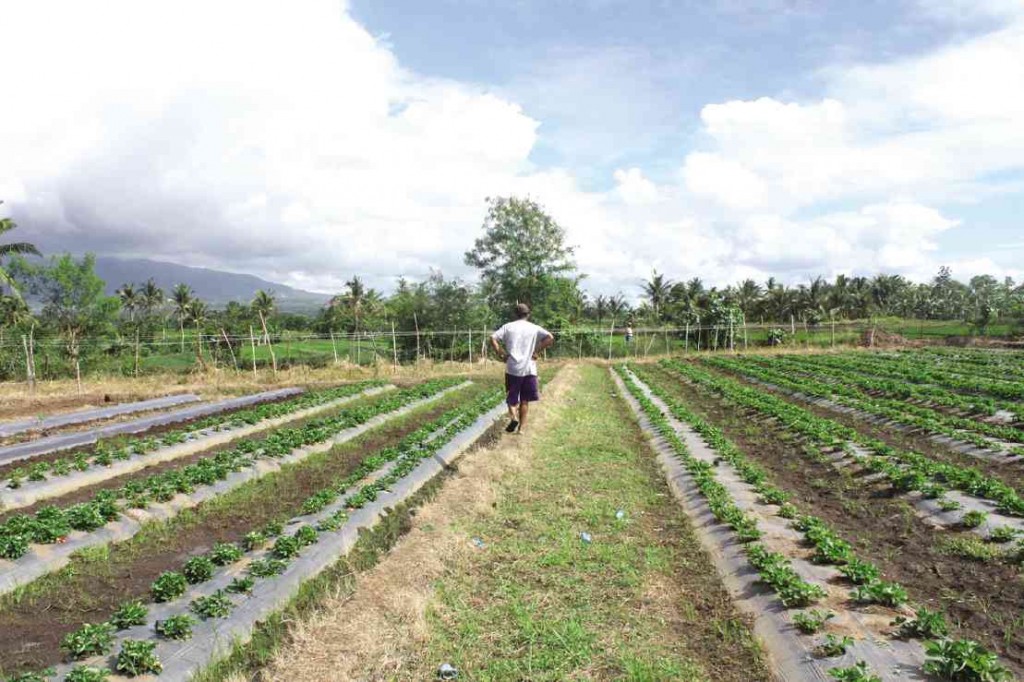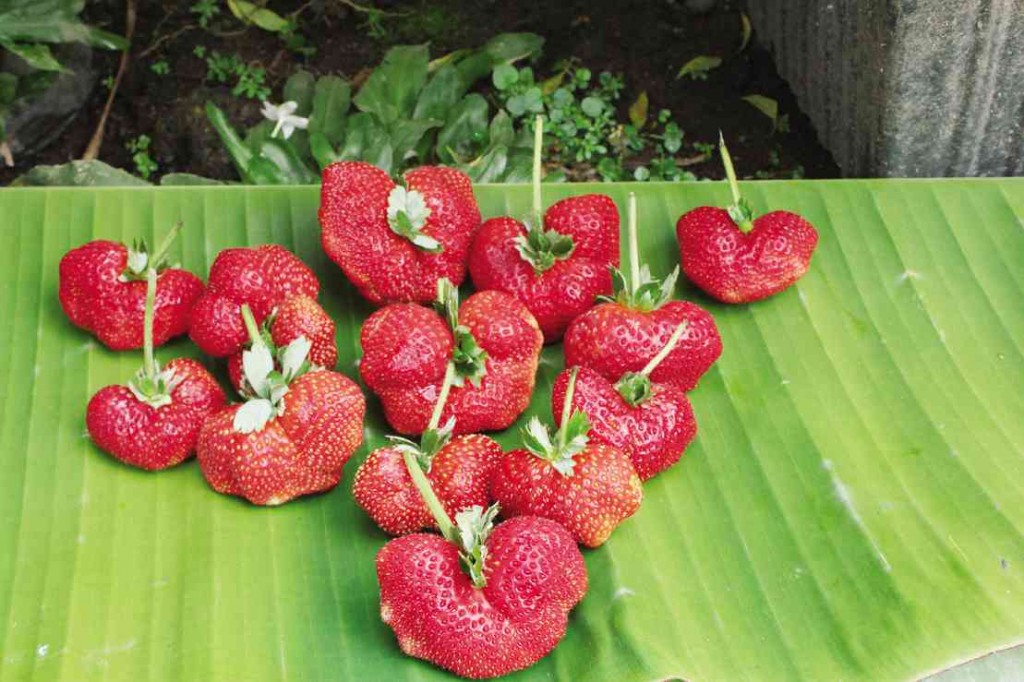Hybrid strawberry jumpstarts CamSur farm

THE STRAWBERRY farm in Pinit, Ocampo, Camarines Sur. PHOTOS BY BY JUAN ESCANDOR JR./ INQUIRER SOUTHERN LUZON
OCAMPO, Camarines Sur—A pioneering farmer, who introduced a hybrid strawberry variety that thrives in the sweltering heat of the lowlands, continues to make use of advances in agriculture technology and organic farming to build up his business.
When Leo Libreja, 38, established his strawberry farm in Ocampo, 27 kilometers southeast of Naga City, he knew it was the start of something big.
Two years ago, Libreja tended a small plant store along the national highway, selling a hybrid strawberry variety, as well as assorted herbs and ornamental plants to passersby.
Today, Libreja is the proud owner of a two-hectare farm that allows him to expand his strawberry plant production and meet rising demand.
Libreja sells the hybrid strawberry plant for P300 a pot.
Libreja, who used to earn a small income tending to the small store, now sees an average of P100,000 a month from the sale of strawberry plants that are ready to bear fruit.
‘Bahay Kubo’ concept
With two more hectares of adjoining land available for expansion, Libreja says he is toying with the idea of turning the farm into an agri-tourism site featuring a “Bahay Kubo”—a concept culled from a popular children’s song. It contains lyrics such as “sitaw,” “bataw” and “patani”—native vegetables that may be grown alongside strawberries and lettuce at the concept farm.
At present, Libreja can only produce about 300 plants a month. He has to turn down hundreds of orders because of the limited production capacity of his present farm.
Curious strangers visit the farm to see for themselves the hybrid variety that thrives under tropical conditions.
Libreja does not tire of experimenting with different technologies to improve the plants he cultivates. Eventually, he found a way to enable the strawberry—normally found in temperate regions—to thrive in a tropical clime.
He employs organic technology to nurture the strawberry he developed from cuttings in Hawaii, which he crossbred with a variety from Baguio City.
It took two years of experimentation before he pinned down the variety that could adapt to the high temperature and low altitude.
The hybrid is the result of a happy marriage between the Baguio variety, which spawns more runners (planting materials), and the Hawaii variety that bears bigger fruits, he says.
Libreja, an agribusiness graduate of Camarines Sur State Agricultural College (now Central Bicol State University of Agriculture), was able to go to Hawaii in 2003 through a grant from the Department of Agriculture (DA). He made full use of his time at the College of Tropical Agriculture and Human Resources of the University of Hawaii Minoa.
He believes that strawberries growing under the sun get the full benefits of photosynthesis, which makes the plants bear sweeter and more aromatic fruits than the highland and cold-weather varieties.
Libreja also experimented and developed farm models of sustainable farming, such as growing ornamental and food plants and aquaculture fish in small areas.
‘Aquaponics’
After Hawaii, he learned everything there is to know about hydroponics technology, drip irrigation and other scientific techniques.
Libreja is now improving a technique he calls “aquaponics,” where he uses fish culture to provide nutrients to the plants he has cultivated.
At the farm, Libreja is developing the prototype of aquaponics for strawberry and lettuce, which are suspended above water and fed nutrients of fish wastes.
He also dreams of producing strawberry by-products, such as jam or candies, and handmade paper made of strawberry leaves for visiting tourists.
Heart strawberries
He is also starting to discover how to make irregularly shaped strawberries—fruits in the shape of a heart, square or one with multiple edges, apart from the common cone-shaped variety.
In February, he was happily surprised by the result of his timed application of organic foliar during the period the strawberry plants were bearing fruits. The plants bore bigger fruits shaped like hearts.
Libreja does not keep his trade secret and, instead, gives away the technology of cultivating the hybrid strawberry variety to his clients, from backyard gardening to plantation establishment—anyone who is interested in learning from him.
